
Invention is the creation of a new device, material, process, or product. People invent things to solve problems, make work more efficient, or make life more pleasant. Some inventions involve only modest innovations (improvements) to existing technology . Other inventions transform society. Such inventions as the printing press , the steam engine , the telephone , the automobile , electronic computers , and the Internet have completely changed the way people live and work. Inventions in weaponry can help determine which side wins in a war.
An invention differs from a discovery, though the concepts are closely related. A discovery occurs when people first observe or recognize something that already exists. An invention is the production of something that did not exist before. For example, people discovered fire . But they invented matches to start a fire.
By developing and marketing their ideas, inventors may hope to earn money or recognition. Or they may enjoy the satisfaction of bringing into the world something new. The process of invention is often difficult and filled with trial and error. Many inventions fail in the marketplace. Some inventors seem to stumble upon their inventions by chance. But more often than not, these lucky inventors had the knowledge and experience to recognize what they had found. Historically, many inventors worked alone. Today, inventors often work with teams of specialists in research labs.
Loading the player...Compact disc
Inventors often apply for a legal document called a patent . The patent gives its holder control over the invention’s production for a certain time. In exchange, the inventor must explain how the invention works in the patent application. People may use an invention in ways that the inventor did not intend or foresee. Inventors may also build upon existing inventions.
This article discusses people who invent, how they invent, and how inventions shape—and are shaped by—society. It also discusses the history of invention. For a broader discussion of inventions throughout history, see the article Technology .
Inventors
Human beings are not the only animals that invent. Scientists have discovered that apes, crows, and a number of other animals make tools for specific purposes. For example, chimpanzees use sticks or grass to poke around in termite mounds and anthills. The insects they pull out provide an important food source.
Loading the player...Thomas Alva Edison
However, no other animal’s way of life revolves around invention the way human life does. Humans seem to be especially inventive by nature. People who invent may enjoy tinkering out of simple curiosity. They may become emotionally involved in new ideas and the thrill of intellectual discovery. Inventors may also hope to become rich and famous.
Fame and fortune.
Some inventors have achieved remarkable success. During the late 1800’s and early 1900’s, people around the world marveled at the inventions of the American Thomas Edison . Edison patented his first invention, a device for recording votes, in 1869. By the time of his death, in 1931, Edison had received 1,093 United States patents, the most ever issued to a single person. Edison became known as “the Wizard of Menlo Park,” after the site of his New Jersey laboratory . Working with assistants, Edison developed an improved telephone. He also developed the phonograph , an electric power system, and other world-changing inventions.
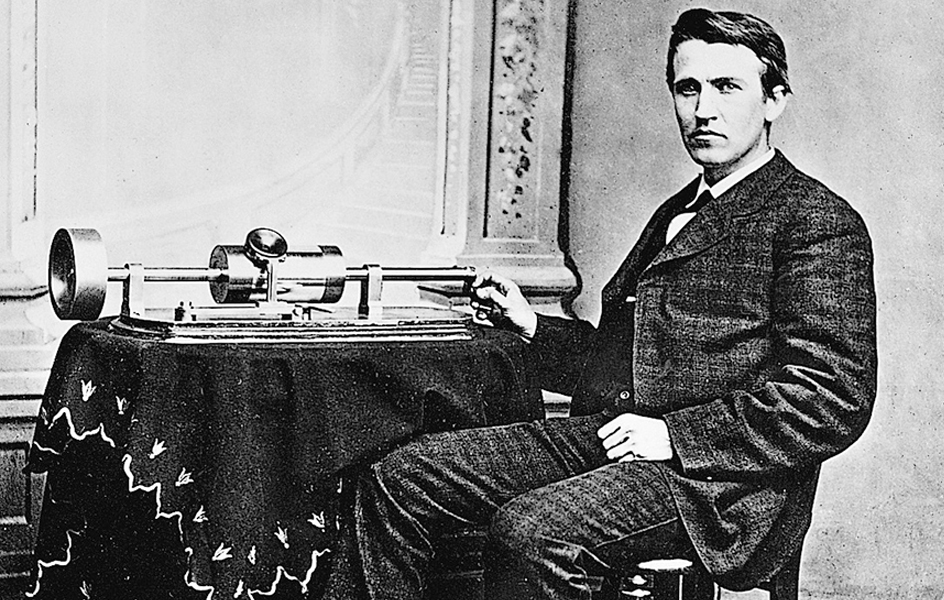
In the late 1900’s and early 2000’s, the American computer pioneer Steve Jobs won similar admiration. As head of Apple Inc. , Jobs oversaw innovations in computers, digital media players, and mobile phones. By the time of his death in 2011, Jobs had put his name on over 300 patents. His patents included the company’s original Macintosh computer and dozens of components for the iPod media player and computerlike iPhone. He even patented the distinctive glass staircases featured at Apple stores. Like Edison, Jobs became extremely wealthy from both his inventions and his business dealings.
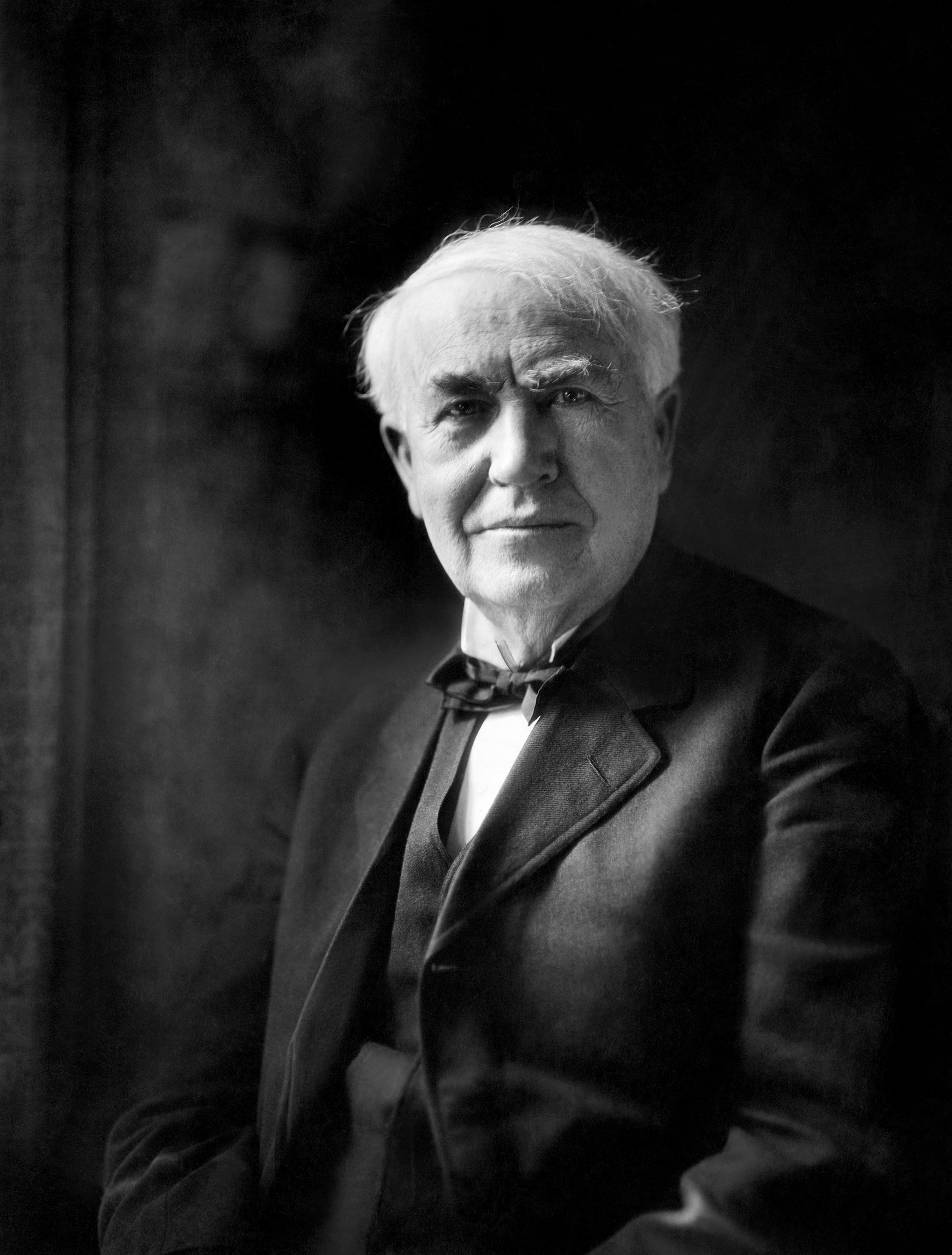
Some people who became famous for other reasons also invented. As a young man, the future U.S. President Abraham Lincoln traveled on riverboats, which often got stuck in shallow water. In 1849, Lincoln suggested putting balloons on a boat’s sides. The balloons could be filled with air to float the boat over sandbars. The idea was not practical and was never put into use. But Lincoln remains the only American president to earn a patent. In 1942, the glamorous Austrian-born American movie star Hedy Lamarr patented a radio -control device for the U.S. military that resisted enemy detection and jamming. Her principle of “frequency hopping” later became the basis for modern wireless communications technology.
Fame and fortune have proved elusive for many inventors. In 1787, for example, the American inventor John Fitch created the first working steamboat . The steamboat would revolutionize travel and trade during the 1800’s. Yet Fitch died extremely poor in 1798. Many other inventors went unrecognized in their lifetimes. Women and minority inventors were especially likely to go unnoticed. Other inventors have been forgotten or lost to history.
Collaboration and conflict.
To bring ideas to market, inventors often need collaborators. These partners may supply funding or entrepreneurial (business building) skill. In the 1830’s, the American painter Samuel Morse envisioned the basic concept behind the telegraph . The telegraph was a device that used electric currents to transmit coded messages. Morse had to team up with three other Americans to develop the telegraph. The scientist Leonard Gale developed a more powerful battery to extend the telegraph’s range. The machinist Alfred Vail further improved Morse’s design, helped finance the patent application, and arranged public demonstrations. The plow salesman Ezra Cornell invented machinery to bury telegraph cables underground and a method to insulate them when strung overhead on poles. As the telegraph business expanded, all four partners became wealthy.
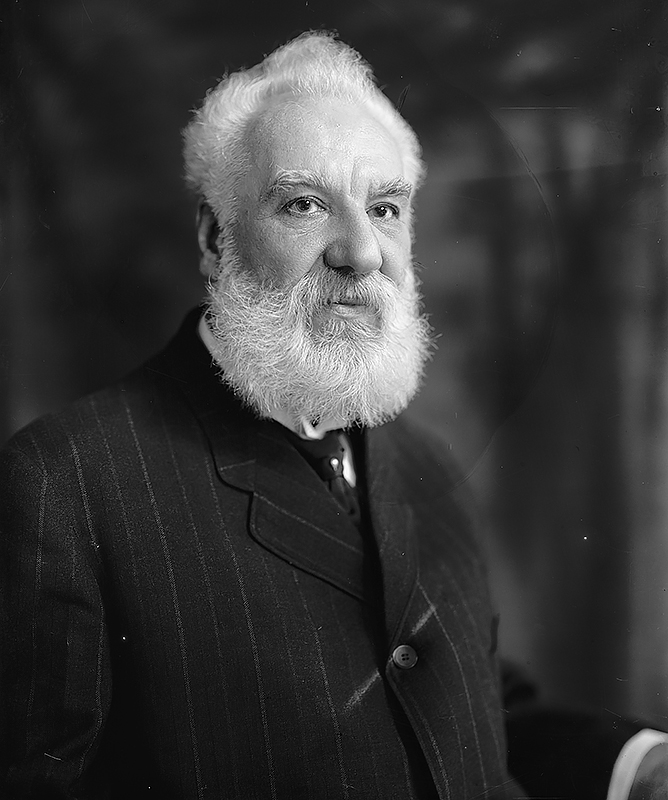
Relationships between inventors have also been marked by bitter rivalry. Often two or more inventors will seize upon a similar idea or find competing solutions to the same problem. For example, the American inventors Alexander Graham Bell and Elisha Gray both envisioned a device that could transmit sound via electrical currents —the telephone. Bell filed a patent for his version of the telephone on Feb. 14, 1876. The exact same day, Gray formally announced his intent to patent the same idea. Bell and his company managed to uphold his patent rights over Gray and others, fighting hundreds of lawsuits over several years.

One of the most notorious rivalries occurred between Thomas Edison and a former employee, an engineer from Austria-Hungary named Nikola Tesla . The two men had competing ideas about how to build the best electric power system. Edison favored a direct current (DC) system. In such a system, electric current flows in a single direction. Tesla promoted an alternating current (AC) system. In an AC system, the current’s direction oscillates (switches back and forth) rapidly. Alternating current made use of a higher voltage and could transmit more energy over greater distances. Tesla invented or improved AC motors , generators , and transformers . His work made alternating current a major threat to Edison’s established DC systems. In response, Edison and other advocates of direct current waged a publicity battle nicknamed the “war of the currents.” They lobbied lawmakers to outlaw AC power. They also traveled the country electrocuting animals to demonstrate the supposed dangers of Tesla’s system.
Race and gender.
For most of history, female and minority inventors have faced discrimination. These groups have traditionally lacked access to educational and investment opportunities. In the United States and Europe, women and people of color were often blocked or discouraged from trying to claim intellectual or economic credit for their ideas. Others could not afford to pay patent application fees or hire lawyers.
Despite these challenges, many women and people of color found ways to pursue inventions and patents. One of the earliest known American colonial inventors was a woman named Sybilla Masters . She developed an improved method for grinding corn . But the British legal system at the time did not allow women to hold patents. Thus, her patent had to be registered under her husband’s name.
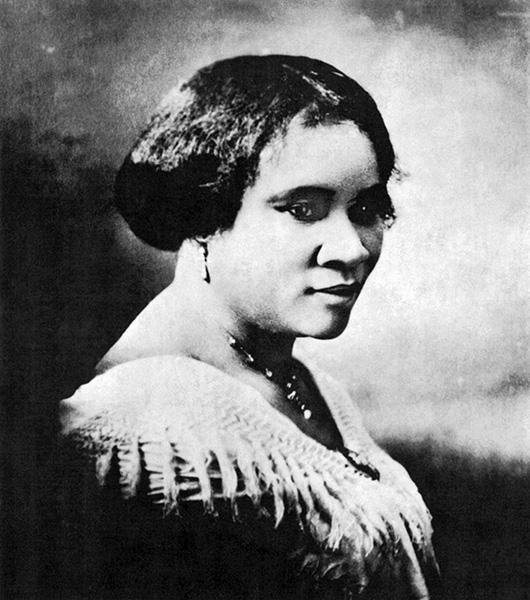
People often invent things to solve problems encountered in their daily lives. Historically, for example, women worked in the home. Thus, many women inventors created such household items as laundry machines, kitchen tools, and clothing and food products. Around 1900, the widowed African American washerwoman Sarah Breedlove McWilliams began inventing hair care products. Walker realized that few businesses were selling beauty products for black women. She soon created an entire line of facial lotions, hair conditioners, and shampoos. Within 15 years, hard work and business sense helped Madam C. J. Walker , as she was later known, to become the first self-made woman millionaire in the United States.
Female and minority inventors have also made devices for use well outside their daily experiences. For example , Martha Coston, an American widow, spent 10 years developing bright, colored flares that ships could light to communicate in code at night. Coston earned a patent in 1859. She then arranged for a factory to manufacture her flares and sold them to the U.S. Navy. The flares gave the Union forces an important advantage during the American Civil War (1861-1865).
The legacies of inventors.
Some inventors have achieved legendary status. For example, one of the most famous inventors of ancient times was a Greek mathematician named Archimedes . He is often credited with inventing a device called the Archimedean screw . The Archimedean screw raises water to irrigate fields. Archimedes also had a reputation for creating fearsome war machines. These weapons included rock-flinging catapults and cranes that could pull enemy ships from the water. According to legend, Archimedes engineered huge mirrored devices that could focus sunlight on enemy ships, setting them on fire. Historians doubt that many of the stories surrounding Archimedes’s inventions are true. Some historians even doubt that he invented the screw device that bears his name.


Unlike Archimedes, modern inventors usually leave behind historical documents, such as research notes and patent applications. But even the legacies of famous modern inventors are subject to exaggeration and misunderstanding. Thomas Edison’s story illustrates many of the complexities and misconceptions surrounding inventors and their legacies. For example, Edison is often characterized as a lone genius . But in reality, Edison owed much of his success to a team of highly skilled assistants. Many people also think Edison invented the light bulb . Actually, Edison only improved the design of light bulbs that other inventors had created before him. Edison did build the world’s first practical electric power system to provide energy for light bulbs. However, modern electric power systems are based on Nikola Tesla’s AC design.
The inventive process
Inventions generally develop through what can be called the inventive process. In this process, an inventor identifies a problem. Then, using creativity and perception, the inventor pursues promising solutions. Inventiveness has many similarities to other forms of creativity, such as writing, painting, and even cooking. Successful inventors, like other successful creative people, tend to experiment, take risks, learn from failure, and seek out new information.
Knowledge and insight.
Some of the most important inventions were developed by ancient people with no scientific education. For example, early people who raised herds of livestock discovered a way to transform milk into cheese . But it was not until thousands of years later that scientists could explain the biology and chemistry of cheesemaking.
Even when inventors lack formal scientific training, they commonly gather scientific information related to their would-be invention. Inventors also study the work of their predecessors and rivals, to learn from the accomplishments and mistakes of others. For example, the American inventors Orville and Wilbur Wright began developing their airplane using flight theory equations (mathematical formulas) suggested by other men. The Wright brothers later determined that this information was faulty and proceeded to collect their own data.
Occasionally inventors arrive at a key idea or set of ideas through chance. In 1953, the American chemist Patsy O’Connell Sherman noticed that it was impossible to remove a few drops of a chemical mixture that had spilled on a colleague’s shoes. Sherman realized that the compound had unique properties to repel oil and water. This observation led her to develop Scotchgard, a spray that protects fabric from stains. The initial insight occurred by accident. But Sherman’s skill at observation was essential. Her experience helped her to recognize that what seemed like an annoyance had valuable commercial potential.
Persistence.
The quotation “Genius is 1 percent inspiration and 99 percent perspiration” is often associated with Thomas Edison. Like other inventors, Edison and his assistants spent a great deal of time and effort perfecting designs and materials through trial and error. Edison had his assistants test thousands of materials, for example, before settling on one to make filaments (glow-producing wires ) for his light bulbs. The Wright brothers were likewise persistent in their search for the right shape for their airplane’s wing. They built many different shapes before finding one that lifted the plane off the ground. Steve Jobs was famous for refusing to compromise or to tolerate products that did not meet his high standards for simplicity and ease of use. Before the iPhone was released in 2007, Jobs had hundreds of Apple engineers secretly working long hours on numerous prototypes.

Setbacks and failures are also part of the inventive process. Edison had a number of failures. He tried for years to invent machines to separate iron from low-grade ore, without success. He also created houses made completely out of poured concrete, but the idea never caught on. In 1985, Steve Jobs was forced to resign from Apple, the company he cofounded, due to flagging sales of the new Macintosh computer and his troubled relationship with upper management. Jobs then started another computer company, NeXT Inc. But he failed to achieve further commercial success in the computer market until he returned to Apple in 1997.
Research labs.
Before the 1800’s, many inventors relied primarily on their own skills. These independent inventors often faced the challenge of finding patrons to support their experiments. To earn a living, many sold their patent rights to others.
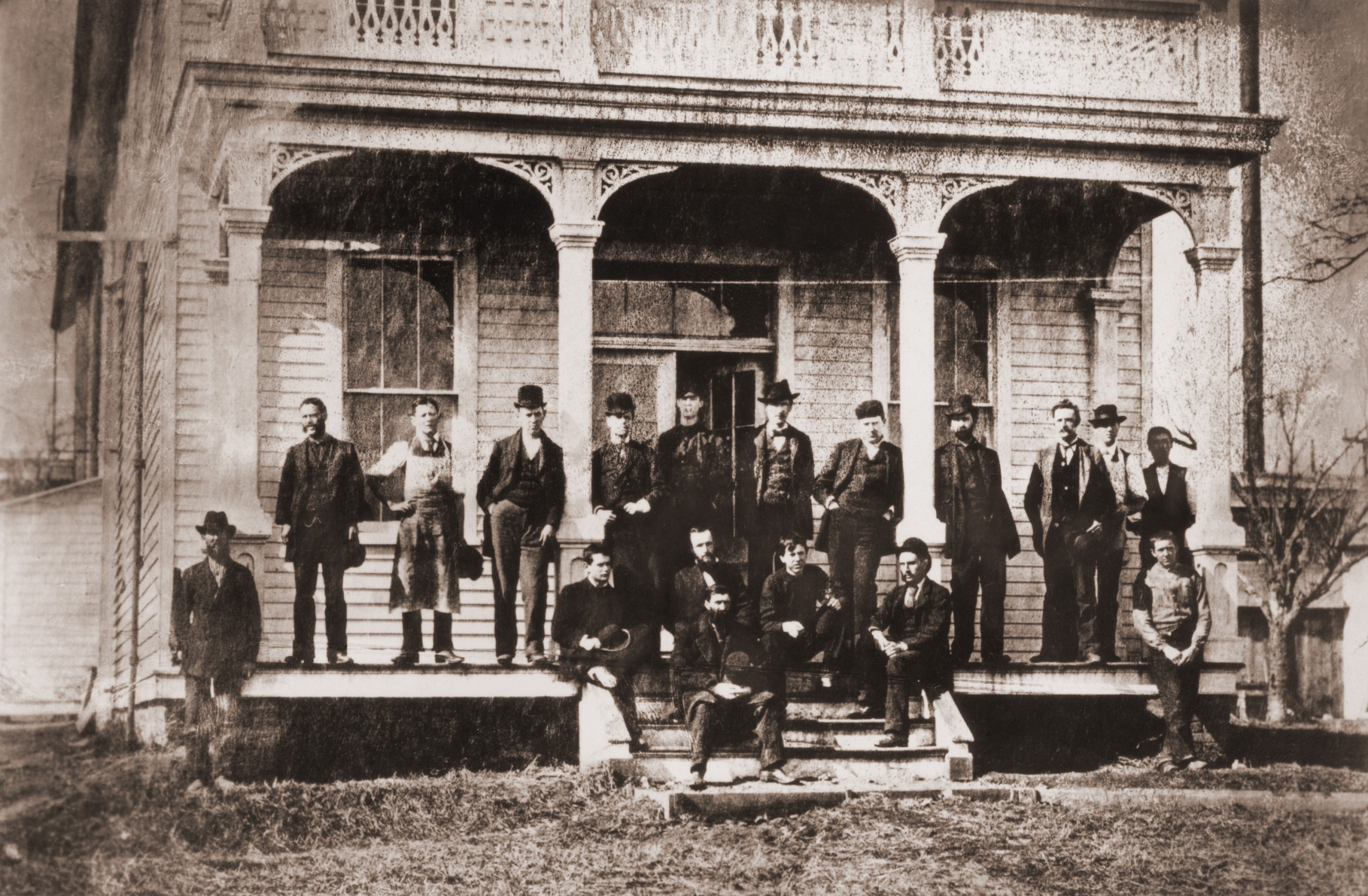
The advent of research labs during the 1800’s changed this way of doing things. Some historians consider Edison’s research lab at Menlo Park to be his most important invention of all. Edison had little formal education. To compensate, he hired dozens of talented physicists, chemists, and machinists. Edison thought up ideas and drafted initial sketches for inventions. Then he turned those proposals over to his staff, supplying them with equipment and funding. Edison’s so-called “invention factory” approached challenges systematically. It thus turned out inventions on a steady basis.
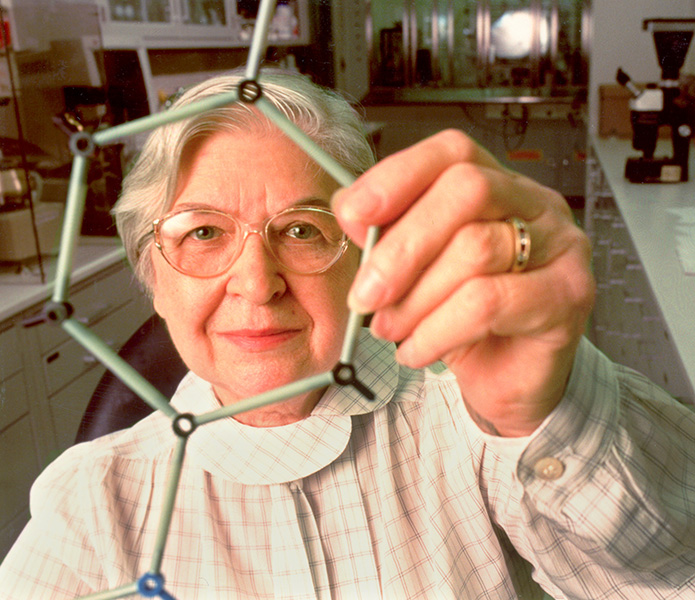
In 1947, three American physicists were working together in the corporate research lab of the Bell System. They were John Bardeen , Walter H. Brattain , and William Shockley . Together they invented one of the most important electronic devices ever, the transistor . Transistors soon became the basis of many types of electronic devices—most notably, computer chips . Research labs at other firms, such as IBM , discovered commercial applications for transistors worth billions of dollars.
Invention and society
Inventors must have personal insight and knowledge. However, they also draw on society’s supply of materials and tools. Inventions rely on other inventions. For example, the invention of electric appliances would have been useless without the development of the electric power grid.
Society also provides inventors with particular problems to solve. Many inventions were created to address such societal problems as fuel shortages, illness, or warfare. Businesses , governments , and individual consumers all help determine whether an invention succeeds and how it is used.
Technology and infrastructure.
Throughout history, inventors have been limited by their era’s technical capacity to transform their visions into reality. Long before the 1900’s, for example, dreamers hoped to build flying machines. But it was not until the late 1800’s that inventors created a vital component of the first working airplane, the gasoline engine . This engine was small, lightweight, and powerful enough to lift a plane and pilot off the ground. But the existence of the gasoline engine alone was not enough to enable the first working airplane. The Wright brothers combined that technology with their studies of flight theory and experimental observations. Loading the player...
First successful airplane flight
Inventions are frequently cumulative, with new ideas springing from earlier ones. One successful invention may create extra incentive for the development of related inventions. In the 1760’s, for instance, the English inventor Richard Arkwright created a spinning machine called the water frame. This water-powered machine could spin thread much faster than could workers by hand. Arkwright set up many textile-making factories that used his machines. This work in turn led to greater demand for cotton . Arkwright then introduced new carding engines, which prepared raw cotton for his factories.
A number of inventions may accumulate to form a single recognized technology. For example, no single person or group created the automobile or the television from nothing. These technologies resulted from the combination and improvement of a number of distinct inventions.
Many inventions are useless on their own. To some extent, inventions rely on infrastructure . Infrastructure includes the systems and services that enable an invention to function. The first telephones, for example, required a network of wires and switches to connect them to one another. Cars rely on roads and a well-supplied system of gas stations. Computerlike smartphones would have little use without wireless phone networks and the Internet.
Social needs.
According to a popular saying, “Necessity is the mother of invention.” Some historical inventions support this principle. During the 1600’s, for example, there was heavy demand for timber to build ships and produce charcoal in Britain (now the United Kingdom). This demand put pressure on the supply of wood . Coal was an alternative fuel source to charcoal. But impurities made coal unsuitable for use in iron-making. In 1709, a British metalworker named Abraham Darby solved that problem. He invented techniques to use a purer, processed form of coal called coke in iron smelting. Darby’s work promoted iron production. It thus made metal objects more affordable.
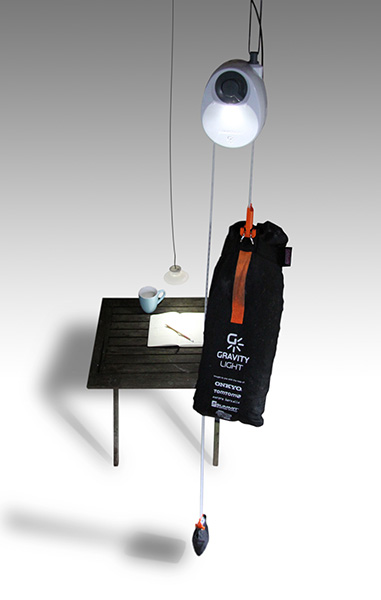
People also invent to make use of surplus goods. The African American agricultural chemist George Washington Carver remains among the most famous examples. In the late 1800’s, Carver found that switching cotton fields to grow peanuts every other year restored essential nutrients to the soil . This practice helped to maintain long-term fertility. But suddenly, farmers were producing huge quantities of peanuts. To create markets for this surplus, Carver invented over 300 new uses for peanuts. He created peanut-based substitutes for cooking oil, milk, coffee, shaving cream, shampoo, medicines, and glue.
Governments, corporations , and other institutions sometimes offer prizes to encourage particular inventions. In the 1700’s, for example, the British Parliament wanted to solve the “ longitude problem” in navigation . Longitude is a system for describing position east or west on Earth’s surface. For centuries, sailors knew how to figure out their latitude (north-south position) by observing the sun or stars. But they could only guess their longitude. The lack of a reliable way to find longitude proved a serious problem. In 1707, for instance, four British warships misjudged their longitude and wrecked, killing about 2,000 men. The British Parliament offered a reward equal to millions of today’s U.S. dollars for a solution to the problem. Many people submitted ideas, some strange or impractical. But clockmaker John Harrison solved the problem by inventing the marine chronometer . This invention was a timekeeping device that remained accurate even aboard rolling ships. Accurate timekeeping proved essential to finding longitude. Using a chronometer, sailors could derive their longitude by comparing the time and the position of the sun and stars with those listed on charts.
War , and the threat of war, has often stimulated invention. Throughout history, national leaders have encouraged innovators to create new weapons to defeat or discourage enemy forces. In the 1400’s and 1500’s, the Italian inventor Leonardo da Vinci designed strong cannons and siege machines to satisfy the military ambitions of European rulers. During World War II (1939-1945), the American government organized physicists, chemists, and engineers into research teams. These teams produced the most destructive single weapon ever used—the atomic bomb . The same war also spurred innovations in radar , jet propulsion , and electronic computers. In the 1960’s, the U.S. military worked with research universities to create a communication network invulnerable to nuclear attack. This network, called ARPANet, became the forerunner of the Internet.
Many inventions, on the other hand, do not answer immediate social needs. Inventors did not need to create the automobile because horses suddenly vanished. And even after cars appeared on the market, people continued traveling by horses, trains, and other means. Nor do inventions magically emerge simply because society has a problem to solve. For example, there is still no cure for the common cold or technology to create limitless fresh water. Inventions are ultimately limited by physical constraints. Inventors over the centuries, for example, have attempted to build perpetual motion machines . But the laws of physics state that such machines are impossible.
Adoption of inventions.
Individuals and institutions play a major role in deciding whether, when, and how an invention is adopted. There is no guarantee that any particular invention will catch on. Indeed, a majority of inventions never reach the public. Even after inventions are successfully adopted, people often find surprising new uses for them.
Marketing inventions.
Inventions that seem pointless may still succeed if marketed persuasively. During the 1970’s, for example, an American marketer named Gary Dahl introduced an “invention” called the pet rock. The pet rock was nothing more than a rock. But clever marketing portrayed it as a pet . The invention became a fad, and Dahl became a millionaire.
Some inventions announced with great enthusiasm fail to thrive in the marketplace. In 2001, the American engineer Dean Kamen predicted that his Segway personal transport device would become an energy-efficient replacement for the automobile. But his Segway “ scooters ” proved too slow to ride on highways and too fast to ride on sidewalks, finding limited use.
Certain inventions become more valuable as they become more popular. A telephone, for example, is useless if nobody else owns another telephone to call. Each telephone’s value thus depends in part on how many people own and use telephones. The success of such inventions often depends on reaching a critical threshold of “early adopters.” Such consumers buy an invention immediately upon its release, despite uncertainty about the invention’s future value or potential flaws. Aggressive marketing and promotion can be essential in attracting early adopters. In the late 1800’s and early 1900’s, telephone companies encouraged Americans to buy phones so that they could place orders with storekeepers or reach a doctor in emergencies. These efforts paid off, and by the early 1900’s, the telephone system grew into an enormous network. In the 2000’s, many technology companies likewise strove to attract masses of early adopters for new products. For example, companies often sold new video game systems at low profit margins—or even at a loss—to attract early adopters.
Changing uses.
Inventors cannot always anticipate how society will use their ideas. Hedy Lamarr originally intended her frequency-hopping device for radio-controlled torpedoes. But her technology eventually found widespread use in military and civilian communications. Steam engines were initially used only for pumping water out of deep mines. But they became valuable for powering machinery in textile mills and other factories, especially after inventors such as Scotland’s James Watt made them more efficient.
A single invention can fulfill a variety of functions. One example is Teflon , a chemical invented by accident in the DuPont Company laboratory in 1938. Teflon is widely used as a non-stick coating on kitchen pots and pans. But Teflon is also used for insulating telephone wires and coating light bulbs. It is used in the manufacture of automobile parts, satellite heat shields, and spacesuits. Teflon is even used in replacement knee ligaments and artificial blood vessels.
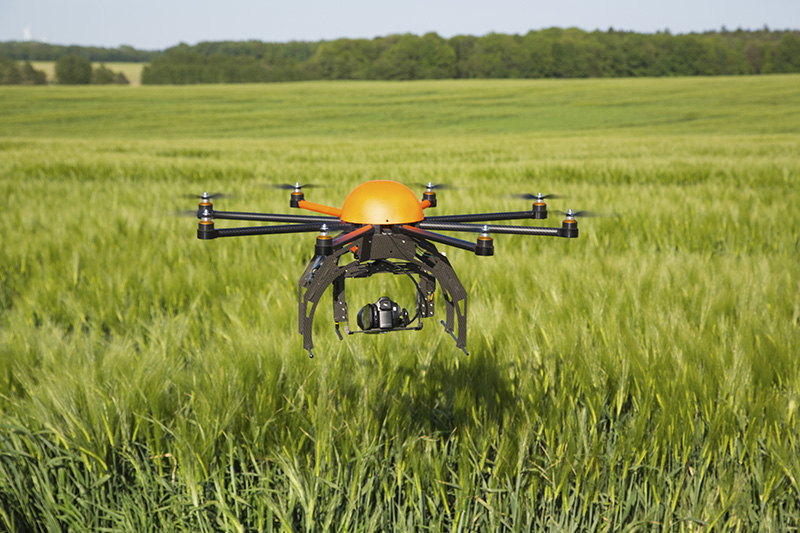
Patents
emerged as a way for governments to encourage invention. An inventor must reveal the details of his or her idea when filing for a patent. These ideas become public knowledge. In return, a patent rewards the holder with a short-term monopoly on the invention. A monopoly occurs when one person or company has control over the entire supply of a given product. A patent monopoly allows the inventor to control the production of his or her idea or creation—for a time. Patents thus encourage invention by helping to ensure its profitability. Patent protections usually last for 20 years or less, depending on the country and the type of patent. After the patent expires, others can duplicate or build upon the patented invention.
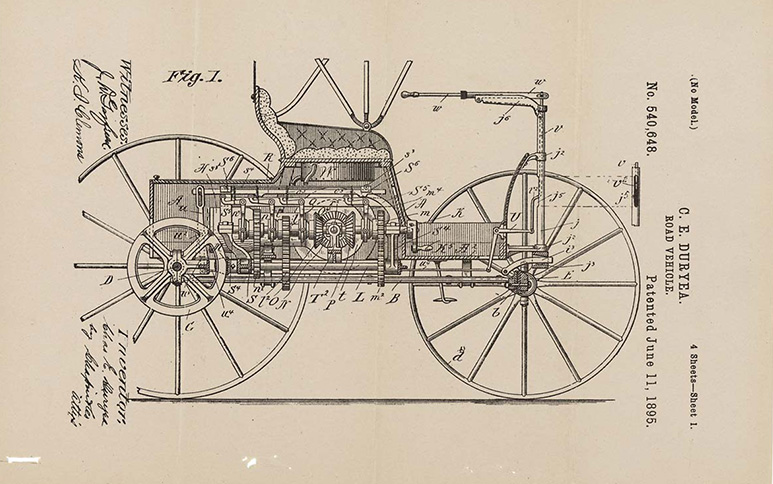
Even after the establishment of the patent system, inventors still faced challenges making money from their inventions. Oliver Evans , an American carpenter, received the third patent ever issued in the United States. It recognized his invention of an automated system to make flour -milling more efficient. To convince mill owners to buy his equipment, Evans wrote a book describing its advantages. Unscrupulous millers then copied his machinery without paying him the proper licensing fee. Evans had to file expensive, time-consuming lawsuits against the patent infringers. He never got rich from his milling machinery, even though it was widely adopted.
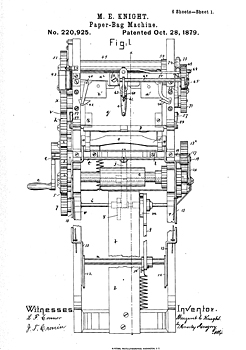
Patents can be a useful guide in determining who deserves credit for a given invention. But merely patenting an invention does not necessarily mean that a person thought of the idea. For example, oversimplified accounts credit the American inventor Eli Whitney with creating the cotton gin , which he patented in 1794. This device removed seeds from cotton fibers, helping to make Southern cotton production more profitable. But similar devices had long existed in China and India . People in the Caribbean and the American colonies had been experimenting with cotton gin designs for decades before Whitney’s patent. Whitney’s gin design succeeded largely because it worked well with short-staple cotton, the type typically grown on Southern plantations.
Inventions that have never been patented still count as inventions. Some inventors have chosen not to seek patents, especially for vaccines and other medical advances. By not seeking patents, inventors enable their inventions to be spread more easily, rapidly, and cheaply.
History
We will never know the names of the earliest inventors. Prehistoric people figured out how to shape rocks into hand tools and make clay into pottery. They learned how to weave plant fibers into baskets and cloth. They developed ways to extract metal from ore and hammer it into useful or decorative objects.
Ancient inventions.
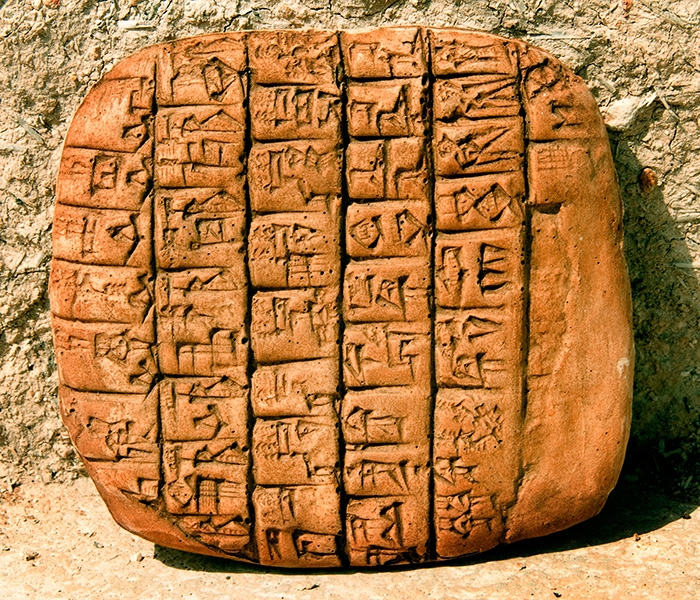
Some of the most important inventions arose not just once but on a number of occasions around the world. For example, inventors living in separate places independently developed the bow and arrow. Agriculture also developed in several different locations. People in the Middle East , in China, and in Central and South America each learned how to change local wild plants into crops suitable for farming. The Sumerians , Egyptians , Chinese, Maya , and other cultures each developed their own forms of writing . Each form used a unique system of symbols written with different instruments on different surfaces. Yet each writing system served a similar purpose—to record information for later use and share knowledge more widely.
On the other hand, not every important invention appeared in every culture. Around 3500 B.C., people in the Middle East created wheels and wagons . These inventions enabled people to travel more easily and transport heavier goods. The wheel quickly spread throughout Europe and Asia . But the most technologically advanced societies in Central and South America never developed the wheel as a form of transportation. The Aztec and Inca people carried loads by hand or dragged them on sleds.
Some of the earliest inventors whose names are known to history were ancient Greeks. Ctesibius << tee SIHB ee uhs >> , a Greek scholar of Alexandria, Egypt, is credited with building the first piston pump around 200 B.C. The Greek mathematician Archimedes was also well known for his inventions.
The spread of inventions.
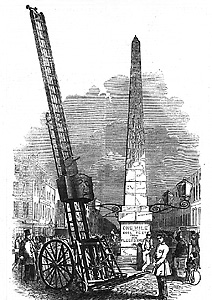
Many world-changing inventions were developed by people in Asia. They include paper , movable type and printing , silk -making, and the magnetic compass . In addition, Asian cultures invented rigid horse collars, porcelain , ship rudders, watertight bulkheads, gunpowder , firearms , and new types of canal locks. In China, emperors tried to keep many inventions secret to maintain military advantage and valuable trade monopolies. The Islamic Empire also developed many important innovations and gathered knowledge from nearby cultures. The empire ruled much of northern Africa and the Middle East from the A.D. 600’s to 1200’s.
Eventually, technologies from Asia and the Middle East spread to Europe. Europeans found important new uses for many Asian inventions. For example, the Chinese mostly used gunpowder for ceremonial purposes. The Europeans used gunpowder to power cannons that could lay waste to castles. The Chinese and Koreans had used printing presses long before the Europeans. But such devices were poorly suited for the thousands of symbols used in Asian languages. The printing press worked much better for European alphabets, which had only a few dozen symbols. In Europe, the printing press soon became an engine of invention itself. It did this by quickening the pace of communication and knowledge-sharing. Many bloody wars fought by Europeans also served to spur invention.
Encouraging invention.
Various cultures developed ways to inspire and recognize invention. In 1474, Venice , Italy, was an important center for glassmaking , silk-making, and shipbuilding. To encourage innovation, Venice’s government passed the first general patent law. The law rewarded inventors by giving them exclusive rights to create their products for up to 10 years.
Other European countries, such as England , France , and the Netherlands , soon followed Venice’s example. Their governments issued patents to inventors and clarified inventors’ legal rights. Scholars thought that inventors should be able to claim their ideas as valuable property. By encouraging and protecting such claims, a country could then benefit from inventors’ improvements in agricultural and manufacturing methods. Europe soon became the world’s center of science and industry.
America’s founding fathers supported the development of a patent system for the newly independent country. The U.S. Constitution specifies that Congress has the power “to promote the progress of science and useful arts, by securing for limited times to authors and inventors the exclusive right to their respective writings and discoveries.” Congress created the U.S. patent system in 1790. President George Washington personally signed the first patent. It recognized improvements in manufacturing potash , an ingredient in glass and soap. By 1836, the United States had awarded roughly 10,000 patents, including some to female inventors and free African Americans.
Corporate invention.
By the late 1800’s, a few German companies had developed early industrial research laboratories. In the United States, Edison popularized the idea of the research lab. Soon major corporations such as DuPont, Westinghouse , AT&T , Eastman Kodak , and General Electric recognized that investing in invention could be an important business strategy. They created teams of specialists. Pooling their scientific and technical expertise, such teams created ideas for improving company operations and developing new products.
Loading the player...Henry Ford makes an affordable automobile
Corporate research labs became an increasingly important source of invention during the 1900’s. Large companies with expansive resources churned out new technology at a rapid pace. In addition to transistors, for example, Bell Labs staff created hundreds of valuable inventions between the 1920’s and 1980’s. They included long-distance television transmitters, electronic human-speech synthesizers, and digital computers. Bell Labs also developed practical solar cells, lasers , communications satellites , and trans-Atlantic telephone cables. The company created the first commercial cell phone network and the first fiber-optic network.
Companies sometimes spent hundreds of millions of dollars to develop new products. The companies needed to recover those costs upon bringing their inventions to market. Established companies were sometimes reluctant to change direction after having invested much money and research in a given invention. In the 1930’s, for example, radios used AM broadcasting systems. AM stands for amplitude modulation . In an AM system, sound is encoded in the changing “heights” of radio waves . In 1933, the American electrical engineer Edwin Armstrong invented frequency modulation (FM). FM systems encode sound in changing radio wave frequencies. Such systems promised better sound quality than AM. Nevertheless, industry leaders refused to pursue FM technology, as they already had heavy investments in AM equipment.
The rise of corporate invention tended to marginalize (reduce the importance and prestige of) the independent inventor. The process of filing for patents could be long, hard, and expensive for individuals. Numerous inventors ran into difficulties in trying to establish priority or claim payment when others profited from their ideas. For example, the Radio Corporation of America (RCA) eventually adopted Armstrong’s FM radio technology. But the corporation refused to pay Armstrong royalties. Legal battles left Armstrong financially ruined, and in 1954, he committed suicide.
Patent wars.
By 2004, the U.S. Patent and Trademark Office had awarded a total of almost 7 million patents. In 2013 alone, it issued over 300,000 more.
In modern business practice, patents are often used as weapons. Technology companies collect patents involving computers, smartphones, and mobile applications to wield against one another in expensive lawsuits. During the 2000’s and 2010’s, for example, billions of dollars were staked in legal face-offs among the technology companies Google , Microsoft , Nokia , Sony , Samsung , Apple, Yahoo , and Facebook, Inc. , (now called Meta Platforms, Inc.).
Some critics complain that flaws and ambiguities in the American patent system tend to discourage invention, rather than encouraging it. They claim that it is too easy to patent even the most trivial innovation, such as the way Apple’s iPhone screens seem to “bounce” when a user scrolls to the bottom of a page. Critics also argue that American patent law is overly complicated. They say it rewards legal strategies over actual innovation. Other countries handle patents differently. Germany , for example, has a special patent court, simplifying the process of settling patent disputes—though some critics charge that the German system is too quick to ban the sale of potentially infringing products.
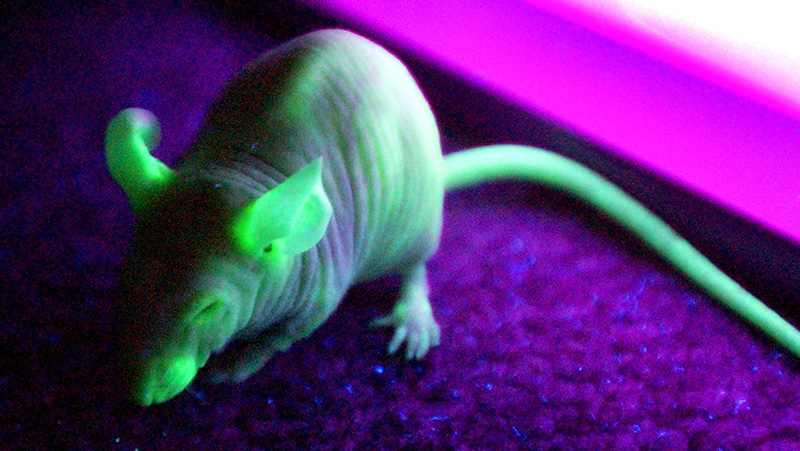
Further controversy arose in the 1990’s when a Utah company, Myriad Genetics, tried to patent human genes . Genes are the chemical “instructions” that help determine how a living thing will grow and develop. The company tried to patent genes linked to higher risk of breast and ovarian cancer . Critics complained that the firm’s monopoly on tests to detect mutations in those genes raised the price of medical testing and blocked other cancer research. In 2013, the U.S. Supreme Court struck down Myriad’s patents. They ruled that simply isolating an important human gene could not count as an invention, because genes are “products of nature.”
